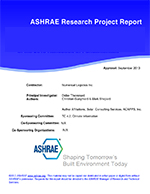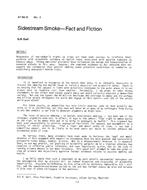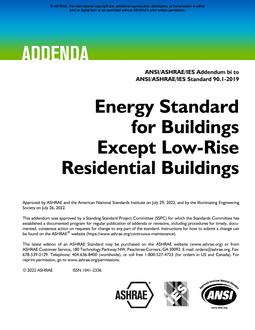Good design of laboratory ventilation requires that the duct be negative in occupied spaces. However, it is not possible to design a fan room or penthouse with the duct negative downstream of the fan. Consequently, when the system leaks after the fan, contaminated air can be released into the penthouse with potential exposure to maintenance and transient personnel. To evaluate the potential hazard, the fan room of a chemistry building at a large university was evaluated. Tracer gas was released in several laboratory hoods, and the concentration of the tracer gas in the penthouse was monitored at locations that simulated typical operator positions. The tracer gas testing in the chemistry building penthouse clearly demonstrated air leakage from the exhaust systems into the penthouse under normal operation. The measured tracer gas levels were low and show that typical exposure levels in the penthouse are below the current OSHA standards. However, because of the obvious odours and the uncertainty caused by low-level exposure to many different chemicals, modifications to the ventilation system were recommended to reduce the amount of leakage in the penthouse. The recommendations included better sealing of the ventilation systems and increased ventilation in the penthouse.
Units: Dual
KEYWORDS: year 1997, Laboratories, exhaust hoods, leaking, personnel, health, hazards, measuring, tracers, gas, testing, exposure, monitoring, failure, fans, ventilation
Citation: Symposium, ASHRAE Transactions, Vol.103, Part 2, Boston 1997
Product Details
- Published:
- 1997
- Number of Pages:
- 6
- File Size:
- 1 file , 590 KB
- Product Code(s):
- D-16723


